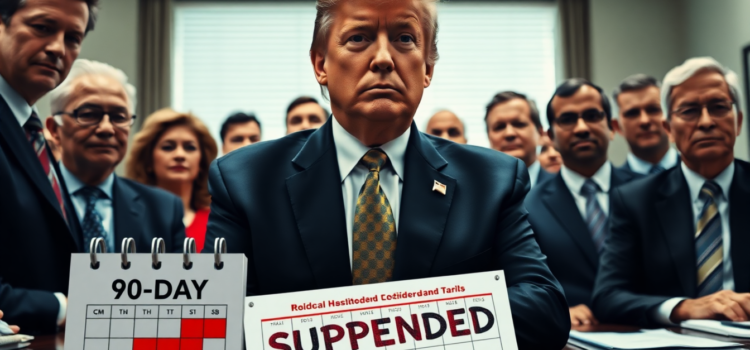
Trump Suspends Tariff Hike for 90 Days: Analyzing the Economic and Political Implications
In a surprising move that reflects both international pressure and domestic realities, President Trump has announced a 90-day suspension of increased tariffs on all countries except China. This strategic retreat, effective from April 10, 2025, comes amidst mounting pressure from business leaders and a wave of public opinion critical of the tariff policy. This article delves into the details of this policy shift and its far-reaching implications on global trade dynamics.
Understanding the Suspension: Key Details of the Trump Reciprocal Tariff Policy
Under the new directive, the baseline tariff rate for most nations has reverted to 10% for the duration of the suspension period. While China remains an exception, facing sharply increased tariffs, this pivot underscores a major shift in the administration’s negotiation strategy.
The China Exception: Persistent Tensions
While most countries enjoy the relief, China remains subject to punitive tariff measures. The ad valorem rates for select Chinese goods have surged to 120%, with some imports now facing a staggering 125% tariff. This comes after perceived retaliatory actions from Beijing and heightened market concerns. Such measures signal ongoing diplomatic challenges in US-China trade relations.
Economic Impact of Trump’s 90-Day Tariff Pause
The economic ramifications of this decision cannot be overstated. Since the onset of the trade war, retaliatory tariffs by China, Canada, and the EU have affected $330 billion in US exports, with a significant impact on the national GDP. The tariff escalation had threatened reduced long-term revenue, and many welcomed the suspension as an opportunity for economic recalibration.
Market Reactions and Business Community Responses
The US 90-day tariff suspension announcement was pivotal in halting a financial freefall. The S&P 500 index had plunged nearly 20%, flirting with bear market territories due to tariff escalation risks. The business community, particularly electronics and auto manufacturers, has expressed cautious optimism. Companies like Apple, which were previously ensnared by tariff fallout, appreciate the reprieve, though long-term concerns about supply chain disruptions remain.
Political and Public Pressure: Driving Trump’s Trade Policy Modifications
Over 75 countries have initiated negotiations with US authorities, pressing for changes in trade barriers, tariff levels, and currency adjustments. Such intense international diplomacy pressures reflect a broad criticism of previous aggressive tariff policies. Public opinion has also played a crucial role, as Americans grow increasingly wary of the economic disruptions synonymous with frequent tariff changes.

Conclusion: Implications and Future Prospects
The implications of this 90-day tariff pause are substantial and multifaceted. It presents both a relief and a window of opportunity for US businesses to stabilize operations amidst volatile trade winds. Looking forward, a careful balancing act remains crucial as the Trump administration navigates both economic imperatives and geopolitical pressures. Stakeholders, both domestically and overseas, eagerly await subsequent policy directions.
To remain updated on US trade policies, subscribe to our newsletter and gain access to in-depth analyses and reports.










Comments